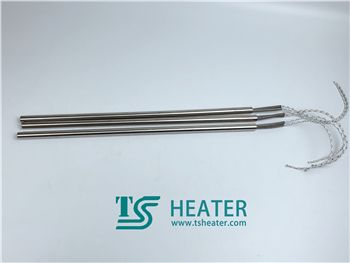
Oct 14 2022

Oct 14 2022

Oct 14 2022

Oct 01 2022
The heating method of the electric heater
1: Resistance heating
Some electric heaters use the Joule effect of electric current to convert electrical energy into heat energy to heat objects. Usually divided into direct resistance heating and indirect resistance heating. The power supply voltage of the former is directly applied to the object to be heated, and when the current flows, the object to be heated (such as an electric heating ironing machine) heats up. The object that can be directly resistance heated must be a conductor, but it must have a higher resistivity. Since the heat is generated by the heated object itself, it belongs to internal heating, and the thermal efficiency is very high. Indirect resistance heating requires special alloy materials or non-metallic materials to make heating elements. The heating elements generate heat, which is transmitted to the object to be heated by means of radiation, convection and conduction. Since the heated object and the heating element are divided into two parts, the type of heated object is generally not limited, and the operation is simple.
2: induction heating
Part of the electric heater uses the thermal effect formed by the induction current (eddy current) generated by the conductor in the alternating electromagnetic field to make the conductor itself heat. According to different heating process requirements, the AC power used in induction heating has power frequency (50-60 Hz), intermediate frequency (60-10000 Hz), and high-frequency (higher than 10000 Hz). The power frequency power supply is usually the AC power supply used in the industry. The power frequency of most countries in the world is 50 Hz. The voltage applied to the induction device by the industrial frequency power supply for induction heating must be adjustable. According to the power of the heating equipment and the capacity of the power supply network, a high-voltage power supply (6-10 kV) can be used to supply power through a transformer; the heating equipment can also be directly connected to a 380-volt low-voltage power grid.
3: Arc heating
Some electric heaters use the high temperature generated by the arc to heat the object. Arc is the phenomenon of gas discharge between two electrodes. The voltage of the arc is not high but the current is large. Its strong current is maintained by a large number of ions evaporated on the electrode, so the arc is easily affected by the surrounding magnetic field. When an arc is formed between the electrodes, the temperature of the arc column can reach 3000-6000K, which is suitable for high-temperature smelting of metals.
4: electron beam heating
Part of the electric heater uses electrons moving at a high speed under the action of an electric field to bombard the surface of the object to heat it. The main component for electron beam heating is the electron beam generator, also known as the electron gun. The electron gun is mainly composed of a cathode, a focusing electrode, an anode, an electromagnetic lens, and a deflection coil. The anode is grounded and the cathode is connected to the negative high position. The focused beam is usually at the same potential as the cathode, and an accelerating electric field is formed between the cathode and the anode. The electrons emitted by the cathode are accelerated to a high speed under the action of an accelerating electric field, focused by an electromagnetic lens, and then controlled by a deflection coil, so that the electron beam is directed toward the object to be heated in a certain direction.
5: infrared heating
Some electric heaters use infrared rays to radiate objects. After the objects absorb infrared rays, the radiant energy is converted into heat energy to be heated.
6: Medium heating
Part of the electric heater uses a high-frequency electric field to heat the insulating material. The main heating object is dielectric. When the dielectric is placed in an alternating electric field, it will be repeatedly polarized (under the action of the electric field, an equal amount of charge of opposite polarity appears on the surface or inside of the dielectric), thereby converting the electric energy in the electric field into heat.